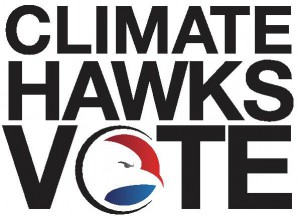I was born and raised in the Midwest (of the U.S.). Both sides of my family come from the Midwest: from Michigan, Indiana, and Ohio. So I like to keep up on what’s going on in the Great Lakes region and other parts of the Midwest, and I promote and support good efforts happening there.
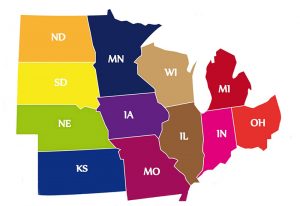
[Note: The Midwest is a very large region in the central/upper part of the country, comprising almost one-quarter of the U.S. states. The following 12 states are generally considered to be within the “Midwest” region: Michigan, Ohio, Indiana, Illinois, Wisconsin, Minnesota, Iowa, Nebraska, Kansas, North Dakota, South Dakota, and Missouri.]
Below is a listing of the midwestern environmental organizations (and a few other types of relevant organizations) and websites that we know of, though there are certainly many, many more. (We don’t know all of these groups well, so being listed here does not constitute an endorsement.) If you know people who live in these states, please share this listing with them.
What are some of your favorite environmental (or other) groups based in midwestern states? Please let us know if the Comments!
- Environmental Law & Policy Center (ELPC)
- Midwest Renewable Energy Association (MREA)
- Honor the Earth
- Indigenous Environmental Network
- BlueGreen Alliance
- Alliance for the Great Lakes
- Great Lakes Echo
- Great Lakes Commons
- Oil and Water Don’t Mix (Keep Oil Out of the Great Lakes)
- FLOW (For Love of Water)
- Great Lakes Environmental Law Center
- Healing Our Waters—Great Lakes Coalition
- Great Lakes Water Protectors
- Wolf Patrol (in MI, WI, MN)
ILLINOIS
- Illinois Environmental Council
- Environmental Law & Policy Center headquarters (ELPC)
- Alliance for the Great Lakes
- Sierra Club: Illinois Chapter
- Prairie Rivers Network
- Little Village Environmental Justice Organization (LVEJO, Chicago)
- Urban Growers Collective (Chicago)
INDIANA
- Hoosier Environmental Council
- Citizens Action Coalition (CAC)
- Sierra Club: Indiana Chapter
- Nature Conservancy, Indiana
- Indiana Forest Alliance
- Save the Dunes (Lake Michigan watershed)
- If It Was Your Child (pediatric cancer cluster from contamination in Johnson County, IN)
IOWA
- Bold Iowa
- Iowa Environmental Council
- Environmental Law & Policy Center: IA office
- Iowa Interfaith Power & Light
- Sierra Club: Iowa Chapter
KANSAS
- Kansas Association for Conservation & Environmental Education (KACEE)
- Sierra Club: Kansas Chapter
- Kansas Land Trust
- Nature Conservancy, Kansas
 MICHIGAN
MICHIGAN
- Michigan League of Conservation Voters (MI LCV)
- Michigan Climate Action Network
- Michigan Environmental Council
- Groundwork Center for Resilient Communities (formerly the Michigan Land Use Institute)
- Sierra Club: Michigan Chapter
- Environmental Law & Policy Center: MI office
- Great Lakes Environmental Law Center
- Great Lakes Renewable Energy Association (GLREA)
- Michigan Energy, Michigan Jobs coalition
- Oil and Water Don’t Mix (Keep Oil Out of the Great Lakes)
- FLOW (For Love of Water)
- Clean Water Action, Michigan
- Michigan Environmental Justice Coalition
- Michigan Water Protectors
- MI CATS (Michigan Coalition Against Tar Sands)
- Ecology Center (Ann Arbor & Detroit)
- Appropriate Technology Collaborative
- MSU’s Knight Center for Environmental Journalism
- Michigan Residents Against ET Rover Gas Pipeline / Over with Rover (Pinckney, Livingston County, Washtenaw County)
- The Greening of Detroit
- Detroit Environmental Agenda
- Detroiters Working for Economic Justice
- The Avalon Village (Highland Park, Detroit)
- Earthworks Urban Farm (Detroit)
- Veterans Green Village (Detroit)
- Saugatuck. Pure Michigan? Not exactly (Saugatuck, Kalamazoo River, Lake Michigan)
- Citizens for Oil-Free Backyards (Scio Township)
- Keep Michigan Wolves Protected
- Barn Sanctuary
- The Creature Conservancy
- Voters Not Politicians (addressing gerrymandering)
- Michigan United
- Also see our Twitter list for Michigan
MINNESOTA
- Conservation Minnesota Voter Center
- Minnesota Center for Environmental Advocacy
- Environmental Law & Policy Center: MN office
- Honor the Earth
- Indigenous Environmental Network
- Clean Water Action, Minnesota
- Fresh Energy
- Rural Renewable Energy Alliance (RREAL)
- Sierra Club: Minnesota North Star Chapter
- Save the Boundary Waters
MISSOURI
- Missouri Coalition for the Environment
- Missouri Votes Conservation
- Missouri Environmental Fund
- Sierra Club: Missouri Chapter
- Coldwater Creek Facts / Just Moms STL (St. Louis Radioactive Waste Legacy)
NEBRASKA
- Bold Nebraska / Bold Alliance
- Nebraska League of Conservation Voters
- Sierra Club: Nebraska Chapter
- Nebraska Land Trust
- Nature Conservancy, Nebraska
NORTH DAKOTA
- Dakota Resource Council
- Environmental Law & Policy Center: ND office
- Sierra Club: Dacotah Chapter
- North Dakota Alliance for Renewable Energy
- Stand with Standing Rock
- Water Protector Legal Collective
OHIO
- Ohio Environmental Council
- Ohio Environmental Council Action Fund (OEC Action Fund)
- Buckeye Environmental Network
- Environmental Law & Policy Center: OH office
- Environment Ohio
- Green Energy Ohio
- Sierra Club: Ohio Chapter
- Stop Fracking Ohio/ No Frack Ohio
- Citizens Not Politicans (end gerrymandering
- Fair Districts = Fair Elections coalition
- HOLA
- Also see our Twitter list for Ohio and our Twitter list for Appalachia (which includes parts of OH)
SOUTH DAKOTA
WISCONSIN
- Wisconsin League of Conservation Voters (WI LCV)
- Midwest Environmental Advocates
- Environmental Law & Policy Center: WI office
- Aldo Leopold Foundation
- Wisconsin Safe Energy Alliance (WISE Alliance)
- RENEW Wisconsin
- Sierra Club: Wisconsin John Muir Chapter
- Aldo Leopold Nature Center (Monona)
- EcoVision Sustainable Learning Center (Lake Geneva)
- Groundwork Milwaukee
You can also find regional land trusts/conservancies in each state via the Land Trust Alliance’s site.
And you can find other State-by-State Resources here (these listings include groups focused on social and political issues, as well). Also note that almost every state should have its own League of Women Voters chapter(s), Common Cause state chapter, Indivisible chapter(s), and an All On the Line (for fair district maps, anti-gerrymandering) state group.
Related post:



 NEW: 2021 update: Municipalities, States, and Countries that are Achieving, Approaching, or Committed to 100% Renewable Energy
NEW: 2021 update: Municipalities, States, and Countries that are Achieving, Approaching, or Committed to 100% Renewable Energy




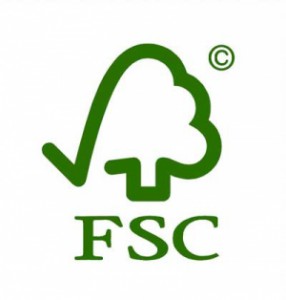
 We have published numerous posts that provide listings of various type of non-profit* groups (related to specific topics and issues), so we thought we’d provide an index of all of them to make them easy to find. Many of the groups that we’ve mentioned in our posts are based in the United States, but some are international organizations and a few are focused on other countries:
We have published numerous posts that provide listings of various type of non-profit* groups (related to specific topics and issues), so we thought we’d provide an index of all of them to make them easy to find. Many of the groups that we’ve mentioned in our posts are based in the United States, but some are international organizations and a few are focused on other countries:




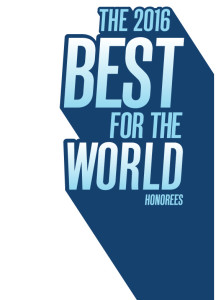
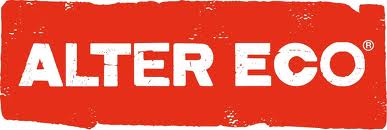


 In this election, many more states could serve as “swing” states than ever before, for a variety of reasons. This is not a normal election. It’s important to recognize that new voter suppression laws (including many restrictive ID laws and fewer voter protections, enabled by the Supreme Court’s evisceration of the Voting Rights Act after the last election), voter intimidation efforts, voter database purges in some states, voter database hacking (database breaches were detected this year in Arizona and Illinois, and were attempted in at least 20 states), and other such forces are sure to have a very negative impact on this year’s elections, so we need to do everything possible to counteract all of these attempts to curtail people’s right to vote. I feel an extra responsibility to vote, since so many people who should be able to vote will not be able to (some only because they’re seniors or students who haven’t been able to get the “correct” form of ID in time).
In this election, many more states could serve as “swing” states than ever before, for a variety of reasons. This is not a normal election. It’s important to recognize that new voter suppression laws (including many restrictive ID laws and fewer voter protections, enabled by the Supreme Court’s evisceration of the Voting Rights Act after the last election), voter intimidation efforts, voter database purges in some states, voter database hacking (database breaches were detected this year in Arizona and Illinois, and were attempted in at least 20 states), and other such forces are sure to have a very negative impact on this year’s elections, so we need to do everything possible to counteract all of these attempts to curtail people’s right to vote. I feel an extra responsibility to vote, since so many people who should be able to vote will not be able to (some only because they’re seniors or students who haven’t been able to get the “correct” form of ID in time).


